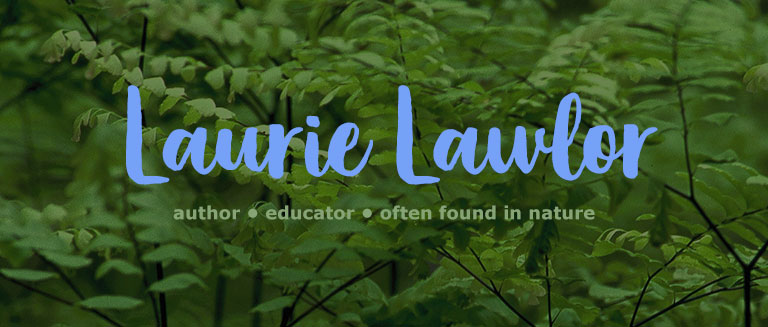Adventures of Marianne North, Botanical Artist
Book Description
Scientist. Artist. Rule-breaker. In 1882, Marianne North showed the gray city of London paintings of jaw-dropping greenery like they’d never seen before.
As a self-taught artist and scientist, Marianne North subverted Victorian gender roles and advanced the field of botanical illustration. Her technique of painting specimens in their natural environment was groundbreaking. The legendary Charles Darwin was among her many supporters.
This biography chronicles North’s life, from her restrictive childhood to her wild world travels to the opening of the Marianne North Gallery at Kew Gardens to her death in 1890. The North gallery at Kew Gardens remains open to the public today.
Becca Stadtlander’s award-winning lush, verdant artwork pairs wonderfully with the natural themes.
Awards and Recognition
Bank Street College of Education Best Children’s Book List
Junior Library Guild Gold Standard Selection
The Nature Generation’s Green Earth Book Award long list
NSTA Outstanding Science Trade Books for Students K‑12 2022
Society of Midland Authors Honor Award
Resources
Fearless World Traveler Teaching Guide
Educator Guide from Holiday House
Hear me read Fearless World Traveler on Holiday House Star Storytime.
“Q&A with Laurie Lawlor,” Book Q&As with Deborah Kalb, 14 May 2021
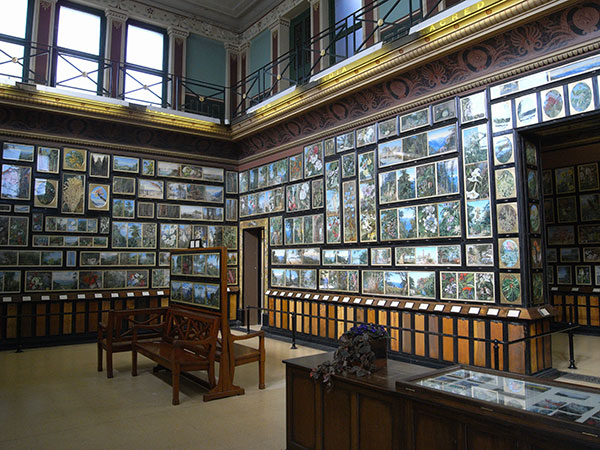
Reviews and Comments
“This is a splendid account of Marianne North, who was born in England in 1830. Options for women in that time period were negligible. Her interests were music, drawing, painting, and exploring the natural world. Going to soirees and preparing herself for running a household bored her to tears. After her mother died, North did end up running her father’s household as a dutiful daughter would but continued her study of botany and recorded specimens in her paintings. It was when her father died that she was finally able to do what it was she wanted, trekking all over the world and recording botanical and wildlife examples. North’s paintings and her contribution to the botanical and natural sciences of the time were extraordinary (her paintings are the only images left of some extinct animals and plants), as was her determination to pursue goals that most women at the time could not. The illustrations are beautifully done, with attention and care carrying the spirit of North’s paintings throughout. Back matter is included. This book would pair well with Barbara Cooney’s Eleanor, covering another independent and courageous woman who gave back to the world. VERDICT A must for all libraries. This is an impeccably attuned biography of a woman who broke the rules to the benefit of all.” (Joan Kindig, James Madison Univ., Harrisonburg, VA, for School Library Journal, starred review)
“As a teenager, Marianne North (1830–1890) acquired a love of music, art, and especially botany (all things that her wealthy Victorian parents disapproved of), teaching herself about plants from books and observation. At the age of forty, after the death of her widowed father, North was finally free to pursue her passions. Initial trips to paint plants in North America and the Caribbean inspired her to go from “a traveler who painted” to “a painter who traveled,” visiting fifteen countries—and creating copious art there—over the next fourteen years. In this fascinating and detailed account of North’s life, Lawlor covers the difficult traveling conditions and accommodations North often encountered: even though “traveling along was frowned upon for ‘unprotected ladies,’” she remained undeterred. A few years before her death, North convinced the director of London’s Kew Gardens to let her build the Marianne North Gallery to house her collection, of which 832 paintings are still viewable today. Grouped by geographic regions, they form an “astonishing” mural-like display, captured by Stadtlander (On Wings of Words, rev. 5/20) on an impressive spread. An appended note about North’s work cogently characterizes her work.” (The Horn Book)
“In this captivating picture book biography, Lawlor tells how Marianne North (1830–1890), born into great wealth in England, faced a total lack of support for her interests in music, art, and botany: ‘Marianne’s mother said she was wasting her time.’ Trapped into a caretaking role until her father’s death, she finally found freedom at age 40. She began to travel the world alone, painting the pictures of flowers and plants that fill her namesake gallery in London’s Kew Gardens. Lawlor’s narrative of North’s astounding journeys on steamships, camels, and canoes weaves in direct quotes that capture her irrepressible spirit—‘Did I not paint?… And wander and wonder at everything?’ Stadtlander’s vibrant watercolor and ink illustrations capture details—gimlet-eyed crocodiles, patterned carpet bags, a crab scuttling over a paint-smeared palette, ‘marauding crows’ stealing ‘glittering tubes of paint’—that conjure the rich peculiarities of North’s intrepid and privileged life. (Publishers Weekly)
“Marianne North (1830–1890) was born into a wealthy family and, as a science-minded young woman, chafed at the constraints of corset and culture. She was 40 before she was able to pursue her ambition to find and paint rare and exotic plants. Over some 14 years, North ‘trekked solo twice around the world,’ traveling by means of everything from ox carts to dugout canoes. She painted plants and insects not in the austere style of most botanical illustration of her era but in situ, using dense oils, to show plants and their real surroundings. In the beautiful endpapers here, children can glimpse a few reproductions of North’s paintings, more than 800 of which are hanging in a gallery named for her in London’s Kew Gardens.” (Wall Street Journal, July 3–4, 2021)
Behind the Book
I’ve long been fascinated by how new environments are explored. What happens when discoveries are brought back to the larger world to be shared—as new scientific knowledge, artwork, and writing? While I’ve investigated and written about explorers ranging from Captain James Cook and Daniel Boone to photographers William Henry Jackson and Edward S. Curtis, I’ve always been intrigued by the possibility of telling the story of an active, determined woman artist and scientist.
This remarkable individual turned out to be Marianne North. Not only did she buck the restrictions for women in Victorian England, she made amazing botanical discoveries and shared first-hand warnings about endangered species long before global warming devastation became apparent. Painting was her passport to the world.
My first glimpse of North came through her artwork. I stumbled upon her amazing paintings in a book about botanical illustration. Who created these vivid, colorful plants surrounded by such lifelike insects, reptiles, and birds that you could almost hear the buzzing, slithering, and singing? While her contemporaries were creating wan watercolor specimens in the comfort of their studios, North at age forty left home and went to the tropics to hunt and capture in brilliant oils the rarest of rare plants. She depicted each in their home environments.
Adventure and art and science—a perfect combination! I became even more enthralled when I read her letters to friends and relations describing her solo, round-the-world trips that involved everything from riding elephants and shooting rapids to climbing mountains on horseback and trekking through jungles on foot.
I hope one day in a post-pandemic times to visit Kew Gardens, where her one-woman show is still on display. Until then, we can wander the gallery digitally to be inspired by her stamina and vision.
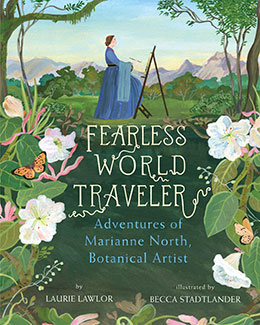
written by Laurie Lawlor
illustrated by Becca Stadtlander
Holiday House, 2021

Buy the Book
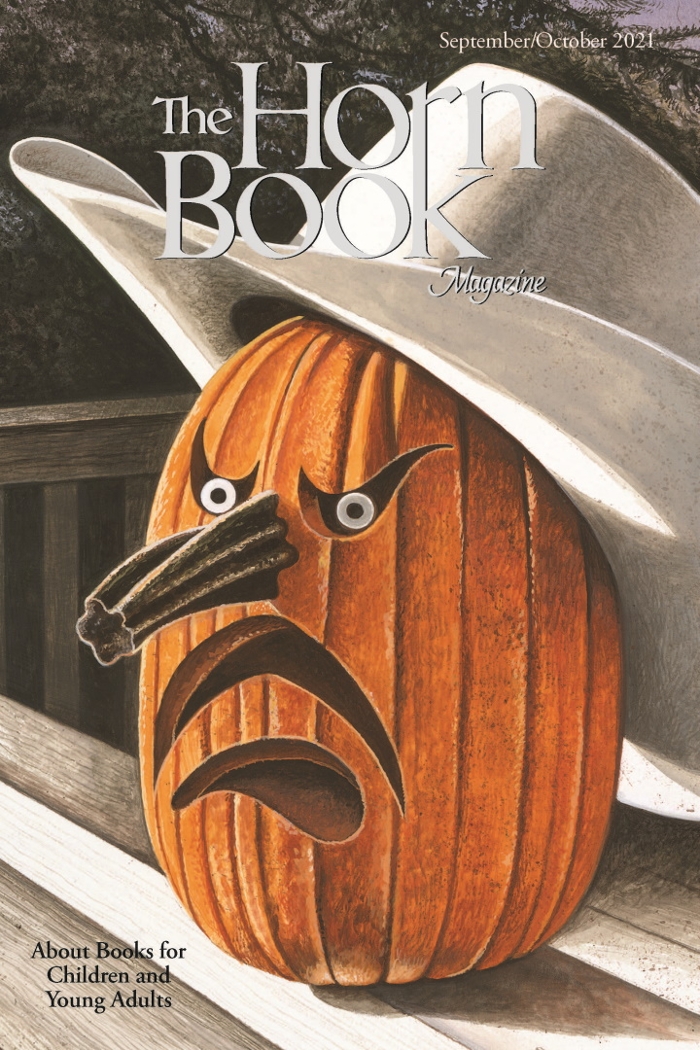
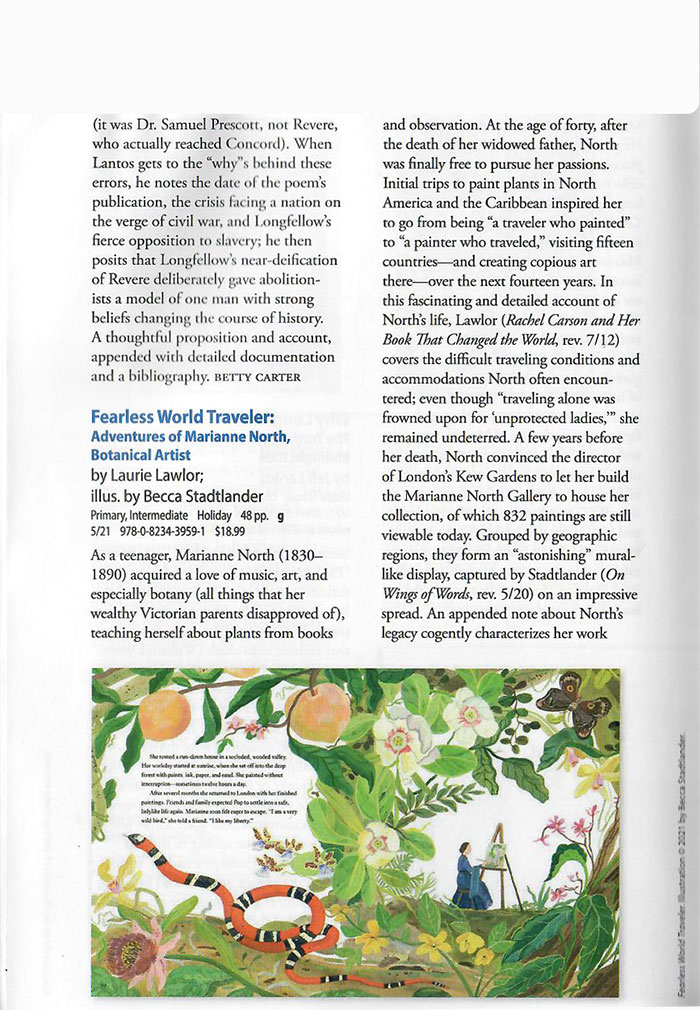
September-October 2021

